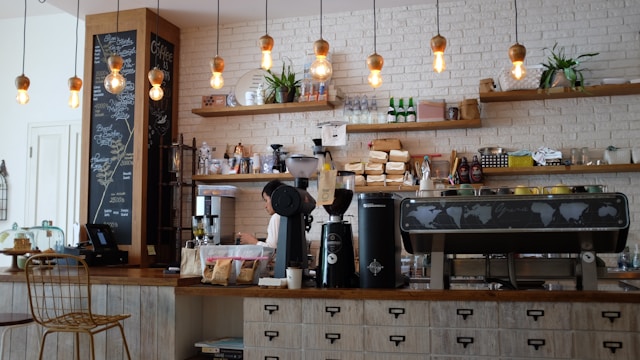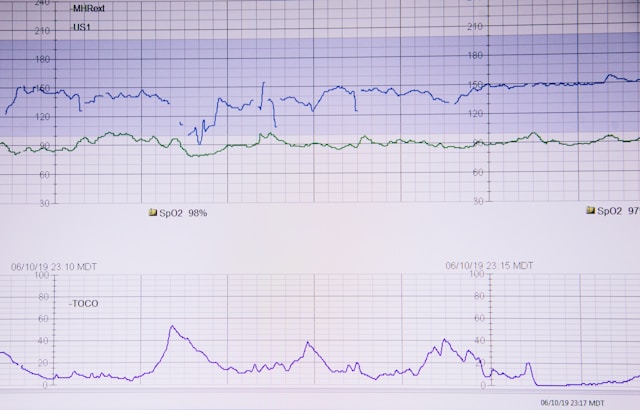Just Another Tuesday
It was one of those perfectly ordinary Tuesday afternoons when I decided to work from my favorite coffee shop. You know the type: exposed brick walls, overly complicated drink names, and WiFi passwords written on tiny chalkboards in artisanal handwriting. What could go wrong?
Spoiler alert: Everything.

"The most dangerous phrase in cybersecurity is: 'It's just a coffee shop, what's the worst that could happen?'" - Me, about 30 minutes before everything went sideways
The Setup: Just Trying to Get Some Work Done
I ordered my usual (medium coffee, black, no need for 17 adjectives) and asked for the WiFi password. The barista, who looked like they'd rather be literally anywhere else, pointed to a sign that read:
WiFi: FreePublicWiFi
Password: password123
Red flag number one. But hey, I needed to update some security documentation (the irony was not lost on me), so I connected my laptop and got to work.
The First Warning Sign
About five minutes in, my VPN started acting weird. Connection drops, slow speeds, the works. Now, most people would probably just blame the coffee shop's internet. But when you spend your days thinking about network security, your paranoia antenna starts twitching.
$ netstat -rn
# Hmm, that gateway IP looks suspicious...
$ arp -a
# And why are there so many devices on this network?
$ nmap -sn 192.168.1.0/24
# Oh. Oh no.
Plot Twist: The Evil Twin
I decided to do a quick WiFi scan, you know, just to see what networks were around. That's when I saw it:
- FreePublicWiFi (the one I was connected to)
- Free Public WiFi (notice the spaces)
- FreePublicWifi (lowercase 'w')
- FreePublicWiFi_5G (suspicious)
- Definitely_Not_A_Honeypot (points for honesty)
The Oh-Crap Moment
I was looking at a classic evil twin attack. Someone had set up fake access points with names similar to the legitimate coffee shop WiFi. And guess what? I wasn't connected to the real one.
Real WiFi: Coffee_Shop_Guest
What I saw: FreePublicWiFi
What I used: FreePublicWiFi (FAKE)
My anxiety: 📈📈📈
The Investigation Begins
Now I was in full cybersecurity mode. I fired up Wireshark (yes, I travel with network analysis tools, don't judge me) and started capturing traffic. What I found was... educational.
Traffic Analysis Results

The fake access point was:
- Logging all HTTP traffic (goodbye, privacy)
- Attempting SSL downgrade attacks (forcing HTTPS to HTTP)
- Injecting ads into web pages (because apparently evil twins need to monetize)
- Capturing login attempts (yikes)
But here's the really clever part: it was also forwarding internet traffic, so victims wouldn't immediately notice they were compromised. Evil, but effective.
The Social Engineering Element
While I was investigating, I noticed something interesting. The barista kept steering people toward the "FreePublicWiFi" network instead of the actual coffee shop WiFi. Turns out, they weren't just a disgruntled employee. They were part of the operation.
The Conversation
Me: "Hey, I'm having trouble with the WiFi. What's the actual network name?"
Barista: "Oh, just use FreePublicWiFi, it's faster."
Me: "But the sign says Coffee_Shop_Guest..."
Barista: nervous laughter "Yeah, that one's broken. FreePublicWiFi works better."
Me: internal alarm bells "Cool, cool. Just checking."
The Ethical Dilemma
So now I'm sitting in a coffee shop, connected to a malicious network, watching a social engineering attack in real-time. What do you do in this situation?
Option 1: Mind My Own Business
Disconnect, leave, pretend it never happened.
Option 2: Play Cybersecurity Hero
Confront the attackers, call the authorities, save the day.
Option 3: Document Everything
Gather evidence, help other customers, and turn it into a learning experience.
I went with Option 3 (with a healthy dose of Option 2).
The Customer Education Campaign
I decided to become an impromptu cybersecurity educator. Armed with my laptop and an uncomfortable amount of enthusiasm for network security, I started approaching other customers.
Customer #1: Business Traveler
Me: "Hey, sorry to bother you, but are you using the WiFi here?"
Them: "Yeah, why?"
Me: "You might want to check which network you're on. There's a fake one that's stealing data."
Them: checks phone "I'm on FreePublicWiFi..."
Me: "That's the fake one! Switch to Coffee_Shop_Guest."
Them: "How did you know that?"
Me: "It's... a long story."
Customer #2: College Student
This one was already using a VPN (smart!), but they were still on the malicious network. I explained how even with a VPN, DNS queries and metadata could still leak, and showed them how to verify their VPN was actually working.
Customer #3: Remote Worker
They were doing online banking. On the fake WiFi. With no VPN.
I may have violated several social norms in my urgency to get them to disconnect immediately.
The Technical Deep Dive
Let me show you exactly what was happening on the malicious network:
Attack Vector Analysis
# The evil twin was running:
1. Hostapd (creating the fake access point)
2. DNSMasq (DHCP and DNS hijacking)
3. SSLstrip (downgrading HTTPS to HTTP)
4. Ettercap (ARP poisoning and traffic manipulation)
5. Custom scripts (data collection and exfiltration)
Data Collection Methods
The attackers were harvesting:
- Browsing history (every URL visited)
- Login credentials (for non-HTTPS sites)
- Email content (if accessed via unencrypted protocols)
- Social media activity (posts, messages, friend lists)
- File uploads/downloads (documents, photos, etc.)

The Response Strategy
Step 1: Immediate Damage Control
I helped disconnect the 12 customers I could find who were using the malicious network.
Step 2: Documentation
I captured network traffic, took screenshots, and documented the attack methods for evidence.
Step 3: Reporting
Called the coffee shop manager, who was genuinely shocked to learn their employee was running a side hustle in cybercrime.
Step 4: Authorities
Contacted local law enforcement cyber crimes unit with my documentation.
The Aftermath
What Happened to the Attackers
The "barista" disappeared during my conversation with the manager. The equipment running the evil twin was hidden in a backpack under the counter. Law enforcement later told me this was part of a larger operation targeting multiple coffee shops in the area.
What Happened to the Customers
Most were grateful for the heads-up. A few thought I was crazy. One asked if I was hiring (I gave them my card).
What Happened to the Coffee Shop
They implemented proper security measures:
- Proper WiFi naming (clear signage with the real network name)
- Employee background checks (apparently this wasn't already a thing?)
- Network monitoring (to detect future evil twin attacks)
- Customer education (a small sign about WiFi security)
Lessons Learned: Public WiFi Security
For Regular Users
- Verify network names with staff before connecting
- Use a VPN for all public WiFi connections
- Avoid sensitive activities (banking, shopping) on public networks
- Check for HTTPS on every website you visit
- Trust your instincts if something feels off
For Businesses
- Clearly label your WiFi with official signage
- Monitor your network for unauthorized access points
- Train employees on social engineering tactics
- Implement WPA3 security where possible
- Consider guest network isolation
For Security Professionals
- Carry detection tools (WiFi analyzers, packet capture)
- Know your local laws about security testing and evidence gathering
- Have an incident response plan for public WiFi attacks
- Practice responsible disclosure when finding vulnerabilities
The Technical Protection Stack
Here's what I recommend for public WiFi security:
Layer 1: VPN
# Always verify your VPN is working
$ curl ifconfig.me
# Should show VPN server IP, not your real IP
Layer 2: DNS Security
# Use secure DNS servers
$ cat /etc/resolv.conf
nameserver 1.1.1.1 # Cloudflare
nameserver 8.8.8.8 # Google
Layer 3: Application Security
- Use HTTPS everywhere (browser extensions help)
- Enable 2FA on all accounts
- Use password managers
- Avoid auto-connecting to WiFi networks
Layer 4: Device Security
- Keep software updated
- Disable WiFi auto-join
- Use firewall software
- Enable device encryption
Red Flags to Watch For
Suspicious Network Behavior
- ⚠️ Captive portals asking for personal info
- ⚠️ Networks with generic names (FreeWiFi, Public, Guest)
- ⚠️ Multiple networks with similar names
- ⚠️ Unusually slow or unstable connections
- ⚠️ Websites suddenly not using HTTPS
Social Engineering Indicators
- ⚠️ Staff pushing specific networks
- ⚠️ Overly helpful "tech support" from strangers
- ⚠️ Requests to download software or certificates
- ⚠️ Pressure to connect quickly without verification
The Bigger Picture: Why This Matters
This wasn't just a one-off incident. Public WiFi attacks are becoming increasingly sophisticated:
Current Trends
- Evil twin attacks are getting harder to detect
- Social engineering is becoming more targeted
- Attack automation makes these scalable
- Data monetization makes it profitable
Future Concerns
- IoT devices creating new attack vectors
- 5G networks introducing new complexities
- Remote work increasing public WiFi usage
- Privacy regulations creating liability issues
Conclusion: Coffee Shop Wisdom
That Tuesday afternoon taught me that cybersecurity isn't just about protecting servers and databases. It's about protecting people who just want to check their email while drinking overpriced coffee.
Key Takeaways
- Paranoia is a feature, not a bug in cybersecurity
- Social engineering attacks often have technical components
- Education is the best defense against many attacks
- Trust but verify everything, especially "free" WiFi
- Sometimes being the weird security person saves people from real harm
The next time you're in a coffee shop, take a moment to check which WiFi network you're using. Verify the name with staff. Use a VPN. And maybe, just maybe, be a little bit suspicious of baristas who seem overly eager to help with your tech setup.
Stay caffeinated, stay secure, and always double-check your WiFi connections.
P.S. - I still go to that coffee shop. They make excellent coffee, and their new security measures are actually pretty impressive. Plus, the staff now asks me for cybersecurity advice, which is both flattering and slightly concerning.
Have you encountered suspicious public WiFi? Share your stories. The cybersecurity community learns best from real-world experiences (and near-misses).